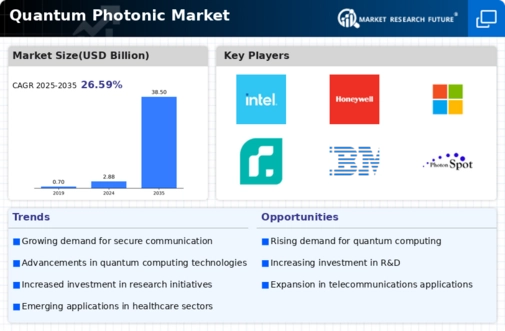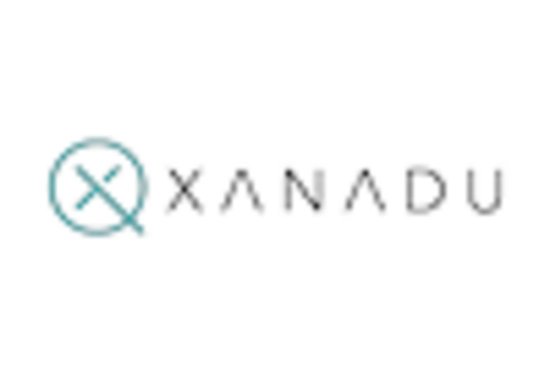Advancements in Quantum Computing
The Quantum Photonic Market is experiencing a surge in advancements related to quantum computing technologies. These innovations are driving demand for photonic components that facilitate faster and more efficient data processing. As organizations increasingly recognize the potential of quantum computing, investments in photonic technologies are likely to rise. Reports indicate that the quantum computing market could reach a valuation of over 65 billion dollars by 2030, with photonics playing a crucial role in this growth. The integration of quantum photonics into computing systems may enhance computational capabilities, thereby attracting further investments and research initiatives within the Quantum Photonic Market.
Emerging Telecommunications Needs
The evolving landscape of telecommunications is significantly influencing the Quantum Photonic Market. With the advent of 5G and the anticipated rollout of 6G technologies, there is a growing need for high-speed data transmission and secure communication channels. Quantum photonics offers solutions that can meet these demands through enhanced bandwidth and reduced latency. The telecommunications sector is projected to invest heavily in quantum technologies, with estimates suggesting that the market for quantum communication could exceed 10 billion dollars by 2027. This trend indicates a robust opportunity for the Quantum Photonic Market to expand its footprint in telecommunications.
Government Initiatives and Funding
Government initiatives aimed at promoting quantum technologies are significantly impacting the Quantum Photonic Market. Various countries are investing in quantum research and development to maintain a competitive edge in technology. For instance, funding programs and grants are being established to support quantum photonics projects, fostering collaboration between academia and industry. These initiatives are likely to accelerate advancements in quantum technologies, with some estimates suggesting that government investments in quantum research could surpass 15 billion dollars by 2027. Such support is expected to catalyze growth and innovation within the Quantum Photonic Market.
Increased Focus on Security Solutions
Security concerns in data transmission are propelling the Quantum Photonic Market forward. As cyber threats become more sophisticated, organizations are seeking advanced security solutions that quantum technologies can provide. Quantum key distribution (QKD) is emerging as a leading method for secure communication, leveraging the principles of quantum mechanics. The market for quantum security solutions is expected to grow significantly, with projections indicating a potential market size of 3 billion dollars by 2026. This heightened focus on security is likely to drive further innovation and investment in the Quantum Photonic Market, as companies strive to protect sensitive information.
Integration with Artificial Intelligence
The intersection of quantum photonics and artificial intelligence (AI) is creating new opportunities within the Quantum Photonic Market. AI applications require substantial computational power, and quantum photonics can enhance processing capabilities, enabling faster data analysis and decision-making. As industries increasingly adopt AI technologies, the demand for quantum photonic solutions is expected to rise. Market analysts suggest that the AI sector could reach a valuation of 190 billion dollars by 2025, with quantum photonics playing a pivotal role in optimizing AI algorithms. This integration may lead to innovative applications and further growth within the Quantum Photonic Market.

















Leave a Comment